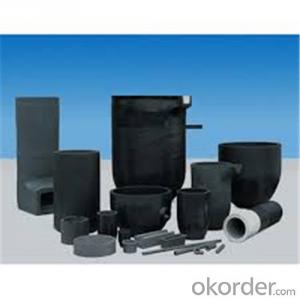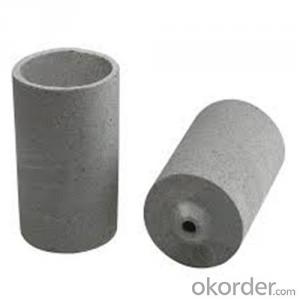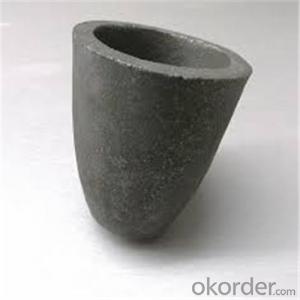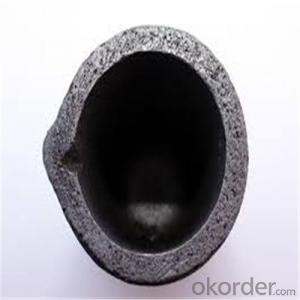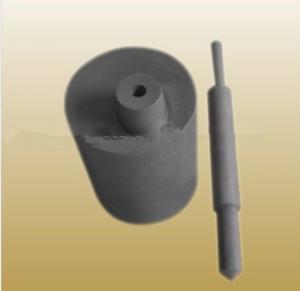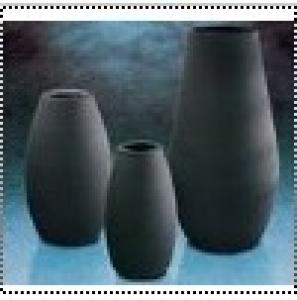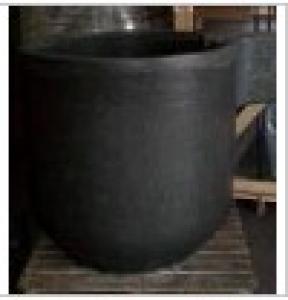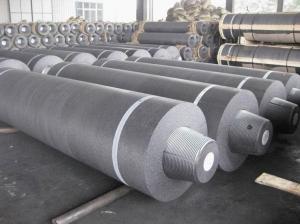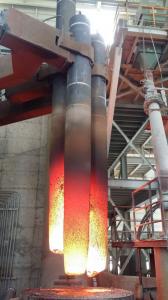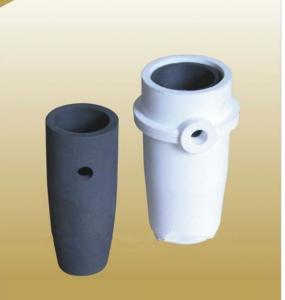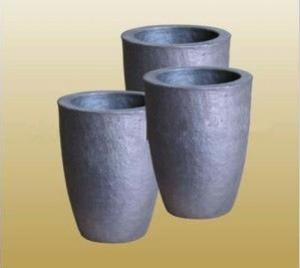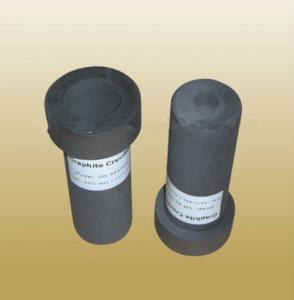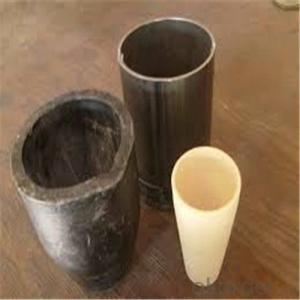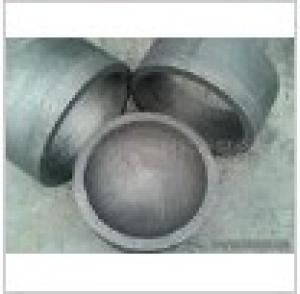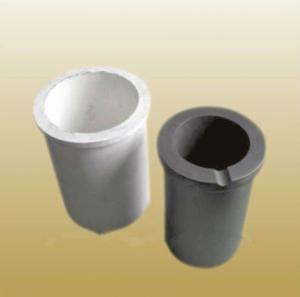Refractory Crucibles Sic Crucible For Brass/Aluminum
- Loading Port:
- Shanghai
- Payment Terms:
- TT OR LC
- Min Order Qty:
- 1 pc
- Supply Capability:
- 1000 pc/month
OKorder Service Pledge
OKorder Financial Service
You Might Also Like
Quick Details for Refractory Crucibles Sic Crucible For Melting Copper/Brass/Aluminum
| Type: | High Strength, graphite crucible crucible | Application: | melting metal | Height: | as your requirements |
| Composition: | High Pure | Top Diameter: | 10-600mm | Bottom Diameter: | 10-1000mm |
| Place of Origin: | China (Mainland) | Brand Name: | Model Number: | ||
| Color: | Black grey | Si3N4%: | 5min | Fe2O3%: | 0.7max |
| C%: | 30-45 | Apparent porosity: | 30max | Refractoriness: | 1680 |
| Bulk Density: | 1.71min | Using life: | >5000 hours | MAX temperature: | 1600c |
Packaging & Delivery
| Packaging Details: | Seaworty packing or as per customer's detail requirement of graphite crucible. |
| Delivery Detail: | within 20-30 days after confirm order of graphite cru |
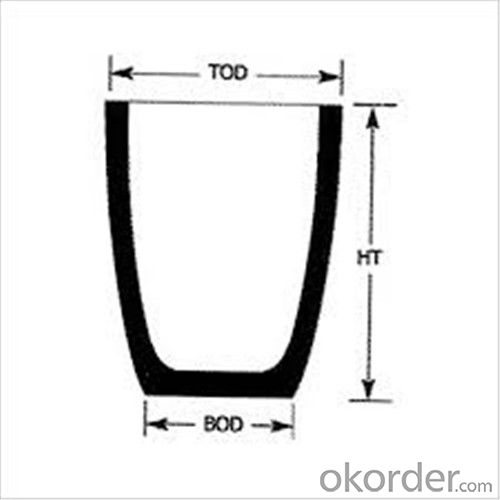

Refractory Crucibles Sic Crucible For Melting Copper/Brass/Aluminum
Physicochemical Properties
Type of Crucible | Type S | Type D |
Carbon Content/% | ≥38 | ≥45 |
Bulk Density/(g/cm3) | ≥1.70 | ≥1.85 |
Apparent Porosity/% | ≤29 | ≤21 |
Compression Strength/MPa | ≥20 | ≥25 |
Refractoriness/°C | ≥1400 | ≥1400 |
Type S: Clay graphite crucible
Type D: Isostatic pressing graphite crucible
Cited from CNS China National Standard of Graphite Crucible, which is solely drifted by TIANFU company.
Content Composition
C% | Sic% | AL2O3% | SIO2% |
45%-50% | 20%-30% | 10%-12% | 15-25% |
Packaging & Shipping
Package: Wooden case and wooden pallet or pack as customer's requirement of graphite crucible.
Delivery time: depend on distance, usually 20 days to 50days after deposit of graphite crucible.
We can supply the products according to customer's drawings, samples and performance requirement.
Other Products

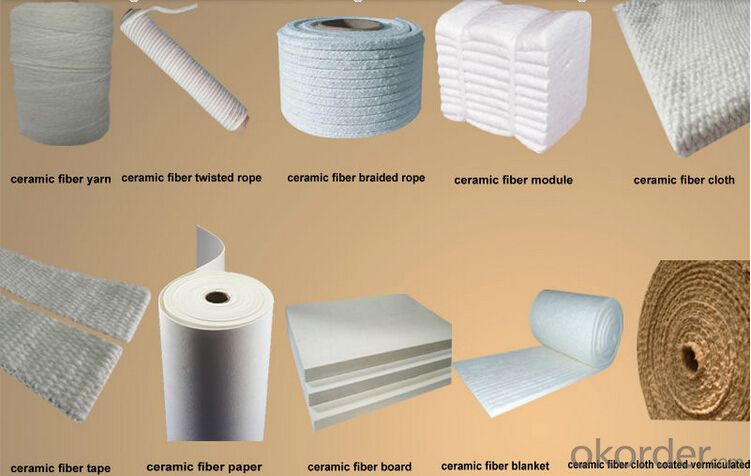
FAQ
1.What's your MOQ?
We will indicate the MOQ for each item in the quotation list. We accept the sample and trail order.
2.Can I negotiate the Prices?
Sure, we may consider discounts for bulk order of products.
3.How long will it take to complete my order?
For the stock items, we can arrange the shippment within 2~3days after received your payment. For the customized items, we will indicate the delivery time in the quotation list.
4.Can you give warranty of your products?
Yes, we extend a 100% satifisfaction guarantee on all items. Please feel free to provide timely feedback if you're not satisfied with N&D's Quality and Service. For the overseas orders, if there is a quality problem, please kindly to provide the picturers to show the problem by e-mail. We will provide the replacements to you at our cost according to actual conditions.
Welcome to visit our factory.
- Q:Can graphite crucibles be used for powder compaction?
- No, graphite crucibles are not suitable for powder compaction as they are primarily used for high-temperature applications such as melting or casting metals, not for compressing powders.
- Q:How does the oxidation resistance of graphite affect the performance of a crucible?
- The oxidation resistance of graphite greatly affects the performance of a crucible. Graphite is known for its high resistance to oxidation, meaning it can withstand high temperatures without reacting with oxygen in the air. This property is crucial in a crucible because it ensures that the graphite material does not burn or deteriorate when exposed to intense heat. A crucible with excellent oxidation resistance will have a longer lifespan, maintain its structural integrity, and prevent contamination of the materials being heated or melted inside.
- Q:How does the erosion resistance of graphite affect the performance of a crucible?
- The erosion resistance of graphite plays a significant role in determining the performance of a crucible. Graphite is known for its excellent erosion resistance, which refers to its ability to withstand the wearing away or gradual destruction caused by various factors such as heat, chemicals, and mechanical forces. In the context of a crucible, which is a vessel used for melting and holding substances at high temperatures, erosion resistance is crucial for maintaining the integrity and longevity of the crucible. The erosion resistance of graphite ensures that the crucible can withstand the harsh conditions it is exposed to during the melting process. Firstly, the erosion resistance of graphite helps to prevent the crucible from deforming or cracking under high temperatures. Graphite has a high melting point and can withstand extreme heat, which makes it an ideal material for crucibles. Without erosion resistance, the crucible would be prone to thermal shock, resulting in cracking or failure. Secondly, erosion resistance is important for preserving the chemical stability and purity of the crucible. Graphite is chemically inert, meaning it does not react with most substances. This property allows the crucible to hold a wide range of materials without the risk of contamination. Additionally, the erosion resistance of graphite ensures that there is minimal loss of graphite particles into the molten materials, preventing impurities from being introduced into the final product. Furthermore, the erosion resistance of graphite contributes to the crucible's durability and overall performance. Graphite crucibles are often subjected to mechanical stresses, such as stirring or pouring of molten substances. The erosion resistance of graphite prevents the crucible from wearing away or deteriorating over time, ensuring that it can be used repeatedly without compromising its functionality. In summary, the erosion resistance of graphite is crucial for the performance of a crucible. It helps to maintain the structural integrity, withstand high temperatures, preserve chemical stability, and enhance the durability of the crucible. Without erosion resistance, the crucible would be prone to failure, leading to potential contamination, loss of material, and reduced lifespan.
- Q:Use the tripod why use mud, and mud and three foot tripod supporting in the use of the crucible?
- Otherwise, the three foot above the ring hole is too large, directly on the crucible to fall down.
- Q:Can graphite crucibles be used for eutectic growth?
- Yes, graphite crucibles can be used for eutectic growth. Graphite has excellent thermal conductivity and can withstand high temperatures, making it suitable for many high-temperature applications, including the growth of eutectic alloys.
- Q:Can graphite crucibles be used with gas-fired furnaces?
- Yes, graphite crucibles can be used with gas-fired furnaces. Graphite crucibles are known for their high heat resistance and ability to withstand extreme temperatures. This makes them suitable for use in gas-fired furnaces, which typically generate high temperatures required for various industrial applications such as melting metals, casting, and heat treatment. Graphite crucibles are commonly used in these furnaces due to their excellent thermal conductivity, low thermal expansion, and resistance to chemical corrosion. However, it is essential to ensure that the gas-fired furnace is compatible with graphite crucibles in terms of temperature range and design to avoid any potential damage or inefficiency.
- Q:Can graphite crucibles be used for laboratory analysis?
- Laboratory analysis can utilize graphite crucibles. Laboratories frequently employ graphite due to its resistance to high temperatures and lack of chemical reactivity. Its advantageous properties make it particularly useful for carrying out processes that involve extreme heat, such as metal melting, as it can endure temperatures of up to 3000 degrees Celsius. Moreover, graphite crucibles possess exceptional thermal conductivity, ensuring a uniform distribution of heat during experiments. However, it is crucial to acknowledge that graphite crucibles may react with specific chemicals or elements under particular conditions, necessitating careful consideration of compatibility with the substances being analyzed. Additionally, the selection of crucible material should be based on the unique requirements of the analysis, as certain situations may demand alternative materials like porcelain, quartz, or platinum.
- Q:How to calculate the loss of aluminum slag melting?
- Look at the size of aluminum slag, big saw recovery rate is high, small saw fine chip is low.
- Q:What are the considerations for selecting a crucible stand for graphite crucibles?
- When selecting a crucible stand for graphite crucibles, there are several important considerations to keep in mind: 1. Material: The crucible stand should be made of a material that can withstand the high temperatures associated with graphite crucibles. Common materials used for crucible stands include stainless steel, cast iron, and ceramic. 2. Stability: The stand should be sturdy and stable to ensure that the crucible remains steady during the heating process. This is especially important when working with high temperatures or when conducting experiments that involve stirring or transferring materials. 3. Size and shape: The stand should be designed to accommodate the size and shape of the graphite crucible being used. It should provide a secure fit to prevent any movement or potential accidents. 4. Heat resistance: The stand should have good heat resistance properties to avoid any deformation or damage when exposed to high temperatures. It should be able to withstand the thermal expansion and contraction that occurs during heating and cooling cycles. 5. Support: The stand should provide adequate support for the crucible, ensuring that it is held securely in place. It should have a design that minimizes any potential contact between the crucible and the stand, reducing the risk of contamination. 6. Accessibility: The stand should allow for easy access to the crucible for loading and unloading materials. It should have a design that allows for easy handling and manipulation of the crucible, ensuring safety and efficiency during operations. 7. Compatibility: The stand should be compatible with the type of heating equipment being used. It should fit properly on the heating apparatus and be able to withstand the associated heat sources, such as Bunsen burners or electric furnaces. By considering these factors, one can select a suitable crucible stand that will ensure the safe and effective use of graphite crucibles in various applications, such as chemical analysis, metal casting, or laboratory experiments.
- Q:How does the density of graphite crucibles affect their performance?
- The density of graphite crucibles plays a significant role in determining their performance. Graphite crucibles are widely used in high-temperature applications such as melting metals, alloys, and other materials. The density of the crucible affects its strength, thermal conductivity, and resistance to thermal shock. A higher density graphite crucible is generally preferred as it offers better mechanical strength and durability. This is particularly important in applications involving repeated heating and cooling cycles, where a lower density crucible may be prone to cracking or damage. A higher density crucible can withstand higher temperatures and provides better resistance to the corrosive effects of various molten materials. Density also influences the thermal conductivity of the crucible. A higher density graphite crucible typically has higher thermal conductivity, allowing for more efficient heat transfer between the crucible and the material being melted. This results in faster melting times and improved overall performance. Furthermore, the density of the crucible impacts its resistance to thermal shock. Thermal shock occurs when there is a rapid change in temperature, causing stress within the material. A higher density crucible is generally more resistant to thermal shock, reducing the likelihood of cracking or failure during the melting process. In summary, the density of graphite crucibles directly affects their performance in terms of mechanical strength, thermal conductivity, and resistance to thermal shock. Choosing a crucible with the appropriate density for a specific application is crucial to ensure optimal performance and longevity.
1. Manufacturer Overview |
|
|---|---|
| Location | |
| Year Established | |
| Annual Output Value | |
| Main Markets | |
| Company Certifications | |
2. Manufacturer Certificates |
|
|---|---|
| a) Certification Name | |
| Range | |
| Reference | |
| Validity Period | |
3. Manufacturer Capability |
|
|---|---|
| a)Trade Capacity | |
| Nearest Port | |
| Export Percentage | |
| No.of Employees in Trade Department | |
| Language Spoken: | |
| b)Factory Information | |
| Factory Size: | |
| No. of Production Lines | |
| Contract Manufacturing | |
| Product Price Range | |
Send your message to us
Refractory Crucibles Sic Crucible For Brass/Aluminum
- Loading Port:
- Shanghai
- Payment Terms:
- TT OR LC
- Min Order Qty:
- 1 pc
- Supply Capability:
- 1000 pc/month
OKorder Service Pledge
OKorder Financial Service
Similar products
New products
Hot products
Related keywords
